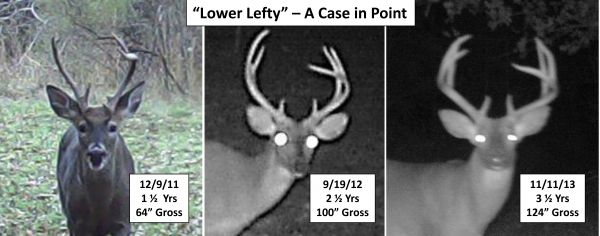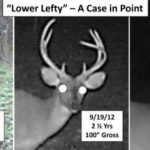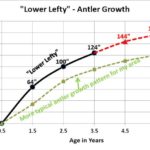
A couple of months ago, here in Happy Trails, I discussed whether or not the use of trail cameras actually diminishes or takes something away from some people’s overall hunting experience. As I pointed out, there is really no right or wrong way to scout and hunt as long as hunting regulations and generally accepted norms are followed.
We humans do not always willingly accept or respond well to change. Over my more than 40 years of hunting experience, I have watched the ebb and flow of countless battles waged over such things as what type of weapon should be allowed during a given season, season start dates, season end dates, bag limits, antler criteria and on and on.
It is impossible to please everyone all the time.
Regarding the relatively recent advent of digital trail cameras to the sport of deer hunting, trail camera use is purely a voluntary pursuit and not everyone uses them. But if you are so inclined, scouting cameras have never been more capable and more affordable than they are right now.
As it is in pretty much every other aspect of life, what one gets out of something is almost always in direct proportion to what one puts into that something. My personal use of digital scouting cameras only started about seven years ago, but once I realized just what could be gleaned from their use I was “all in.”
Not everyone currently using scouting cameras (you should note that I interchangeably refer to them in Happy Trails as both “scouting” and “trail” cameras) fully understands how powerful a collection of scouting photos can be to hunting success, if utilized properly. Pictures are a form of data — and data that comes with the date and time (and in some cases the temperature) can easily be transformed into statistics.
Using cameras, we all now have the capability to become deer detectives, so be creative in how you review and analyze your own data. Over the past several years I have used my personal photo data in various ways to reveal numerous things about deer behavior on my own personal property, such as the timing of scrape visits by bucks, buck movement by time of day, buck movement as it relates to temperature, wind speed and percent cloud cover.
This can all be accomplished using very basic skills and hardware.
The header photo for this article is a prime example of what can be learned about individual members of your deer herd from a scouting photo data base that is preserved year to year, is organized and is readily accessible.
We refer to the subject buck that is shown above as “Lower Lefty” for a very obvious reason: His left main beam has had a tendency each antler cycle to droop a little lower and flatten out more than his right main beam. As you can see, I have been able to identify this particular buck each year for the past three years and watch him grow from being a seemingly nondescript 1 ½-year-old on up to the present pretty handsome 3 ½-year-old.
The gross antler scores for each year were obtained by running photos through Buckscore, for which I have a subscription membership. Buckscore allows you to calculate a buck’s antler size, using the B&C scoring system, without having to pull the trigger. The cost to join Buckscore, which gives you the ability to measure and score antler size in scouting photos, is really quite nominal, considering what the program can do for you.
The Buckscore process does not work for every buck photo, though, as a subject buck must be positioned correctly in order for the comparative statistical data and the internal algorithms of Buckscore to work accurately. In the particular case of Lower Lefty, I was able to find three photos that were all head-on or at zero degrees.
One thing that immediately stands out to me about this three-year comparison is that Lower Lefty is an obvious over-achiever when it comes to antler growth.
If your personal goal is to try to grow and ultimately harvest fully mature bucks with good antler racks, then Lower Lefty would be one to leave alone and put on your don’t-shoot list for another year or two.
Although impressive, his 124 gross inches of antler at age 3 ½ is a definite harbinger of good things yet to come.
On the accompanying graph, you can see in dashed-red where I project Lower Lefty’s anticipated future antler size forward in time to age 5 ½ years — a prediction using my own personal set of annual percentages for progressive annual antler growth in Mississippi bucks.
Although some scientific studies have shown that bucks can continue to add antler size after age 5 ½ years of age, my table of percentages caps a Mississippi buck’s total ultimate antler growth at age 5 ½. The annual growth percentages, as used here, are based on actual published research that was done in Mississippi on captive bucks. I use this set of customized rule-of-thumb percentages regularly to evaluate and classify bucks in my trail camera photo data base.
My customized annual percentage factors are rounded off for ease of use in the field. Absolute accuracy is not necessary when classifying bucks, as I am not attempting to predict an exact future antler score.
My personalized table of annual antler growth percentages, as used here, is as follows: 30 perdent of ultimate antler size potential by age 1 ½, 60 percent of future potential by age 2 ½, 80 percent of future potential by age 3 ½, 90 percent of future potential by age 4 ½ and, finally, 100 percent manifestation of antler size potential by age 5 ½.
Lower Lefty projects to be a 140-inch class buck next year at age 4 ½ and a 150-inch class buck at 5 ½ years of age.
There is also a second curve on the graph below Lower Lefty’s black-and-red projection. This second curve gives you a general idea of the expected antler growth progression for a fairly average 5 ½-year-old buck from my geographical area here in west-central Mississippi, ultimately topping out at about 120 inches of total antler.
This comparison indicates just how good a buck Lower Lefty really is, compared to other local bucks in his age class.
This short exercise readily points out how the digital images we collect on our scouting camera memory cards can be more than just photos. Save and organize your personal scouting photos, and be creative in finding practical ways to utilize your photos to improve your hunting success.
Yes, scouting camera photos can be great “eye candy,” but they can also be so much more.




